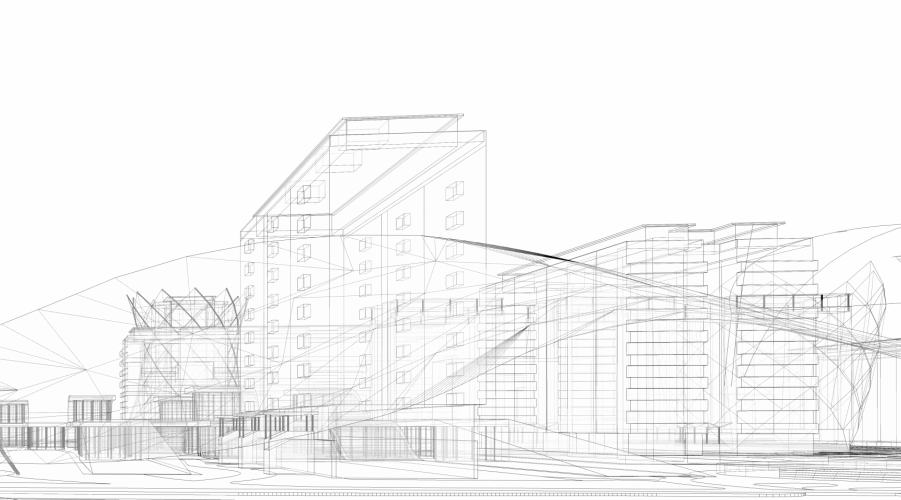
(5 min read)
The EU made significant progress this week on the path to achieving net-zero buildings. On 30 June 2025, the European Commission published a comprehensive implementation package to guide Member States ahead of the 2026 transposition deadline for the recast Energy Performance of Buildings Directive (EPBD) EU/2024/1275. Adopted in May 2024, this Directive represents the EU’s most ambitious effort to decarbonise its building stock, with significant implications for landlords, developers, legal practitioners, and investors in Ireland.
With less than a year to transpose the EPBD, the package marks a key milestone in establishing a unified approach to implement zero-emission building targets and includes a detailed interpretive document with 13 annexes and two new regulations. This article summarises the key elements of the package and its implications for national implementation across the EU.
Background: From Green Deal to Irish Legislation
The EPBD is a cornerstone of the EU’s European Green Deal and “Fit for 55” targets, and aims to decarbonise the building sector, which accounts for around 40% of energy consumption and emissions in the EU, by 2050. To comply, Ireland will need to enact legislation addressing a wide range of measures, including:
- Requiring public buildings must meet Zero Emission Building (ZEB) standards from 1 January 2028, with the requirement extended to all new buildings by 1 January 2030.
- Adopting of a harmonised EU-wide Energy Performance Certificate (EPC) scale ranging from A (best) to G (worst).
- Phased renovations through Minimum Energy Performance Standards (MEPS) targeting the worst-performing non-residential buildings (16% by 2030 and 26% by 2033).
- Introducing tenant protection measures to prevent unfair evictions linked to renovations (“renovictions”).
- Mandatory solar readiness and electric vehicle (EV) charging infrastructure for most new constructions.
- Phasing out fossil fuel boilers by 2040.
The June 2025 Package: What’s in it?
The implementation package released by the European Commission consists of three core components that provide practical and technical information for stakeholders across Member States. These tools are designed to support the effective transposition, and where possible, the uniform, transposition of the EPBD into national law by May 2026 and include regulatory measures, reporting standards and interpretive guidance.
Delegated Regulation
Purpose: Establishes a revised calculation methodology for energy performance requirements.
Implication: Enables Member States to adapt standards for new and existing buildings according to local climate, building stock, and cost factors.
Implementing Regulation
Purpose: Introduces standardised templates for Member States to report data to the EU Building Stock Observatory.
Implication: Ensures consistent tracking of renovation progress and requires alignment of Ireland’s Building Energy Rating system with EU metrics.
Guidance Documents
Purpose: Provides detailed guidance on the national transposition of the EPBD, in respect of legal, technical, and tenant-related obligations.
Implication: Clarifies legal, technical, and tenant-related obligations to support practical implementation.
Key Summary of the Guidance Documents
The 13-annex guidance document offers technical definitions, policy clarifications and new legal frameworks for key EPBD provisions, including:
- Minimum Energy Performance Standards (MEPS) for worst-performing buildings, national renovation trajectories, tenant protections, and safeguards against “renoviction” (Annex 1);
- Financial incentives, market barrier removal, and one-stop shops providing streamlined technical and financial advice, with a focus on vulnerable households and the worst-performing buildings (Annex 2);
- Updated EPC system with harmonised A–G labelling, digital templates, quality controls, and mandatory on-site checks (Annex 3);
- Renovation passports providing tailored, stepwise renovation roadmaps for buildings (Annex 4);
- National databases consolidating EPCs, renovation passports, inspection reports, and energy use data (Annex 5);
- Free, transparent access to building energy data for owners, tenants, and managers, with interoperability and data-sharing frameworks (Annex 6);
- Definitions and certification criteria for Zero-Emission Buildings (ZEBs) with strict energy and renewable requirements (Annex 7);
- Solar readiness and deployment rules for new and existing buildings, supported by technical and financial measures (Annex 8);
- Sustainable mobility infrastructure standards including EV charging points and bicycle parking (Annex 9);
- Updated technical building system requirements, indoor environmental quality standards, and inspection protocols (Annex 10);
- Phase-out plans for fossil fuel boilers and incentives to replace them with renewable heating solutions (Annex 11);
- A common framework for calculating building energy performance reflecting user needs, new technologies, and climate considerations (Annex 12); and
- Life-cycle Global Warming Potential (GWP) calculation and disclosure requirements for new buildings, phased from 2028/2030 (Annex 13).
This package offers the first comprehensive roadmap for Ireland and other Member States to align national law with the EPBD, providing practitioners with clear definitions, calculation methods, and policy direction since the EPBD’s adoption.
The Transposition Clock Is Ticking
The EPBD has now moved firmly from ambition to a call to action.
With the release of the June 2025 implementation package, the European Commission has provided a comprehensive framework to guide alignment of national laws with the EU’s building decarbonisation goals. For the first time, Member States have a consolidated roadmap outlining technical definitions, compliance mechanisms, and policy expectations.
Ireland must prepare to transpose the EPBD into national legislation by 29 May 2026. In the meantime, legal practitioners and industry bodies have an opportunity to help shape how the new obligations are interpreted and implemented in practice.
For legal practitioners, developers, property owners, landlords, ESG teams, and investors, the changes mean:
- Alignment of Energy Ratings: New EPCs using an EU-wide A–G rating scale will become the standard, improving comparability and transparency across markets. Ireland’s BER is already aligned in structure, but will require updates to meet new harmonised benchmarks under the EPBD.
- Contracts will need updating: Green clauses are already appearing in contracts. Sales, leases, and financing arrangements will need to reflect new energy disclosure requirements and obligations tied to minimum energy standards.
- Retrofit planning is now essential: Owners of energy-inefficient buildings will face phased compliance deadlines under Minimum Energy Performance Standards (MEPS). Early planning will be essential to avoid penalties or restrictions on sales or leases.
- Asset value will increasingly track energy performance: We are already seeing that buildings with poor EPC ratings or unclear renovation pathways are less appealing with tenants, buyers, and lenders. Sustainability credentials are becoming a core factor in real estate valuation.
Conclusion
The EPBD marks the beginning of a major transformation in how buildings are assessed, upgraded, and regulated across the EU. The June 2025 guidance package will heavily influence Ireland’s legislative approach in this area. Real estate professionals, including legal practitioners, developers, landlords, ESG teams, and investors should start considering and forecasting the likely impacts the EPBD will have on compliance, leasing structures, and retrofit planning. Ongoing engagement with both EU-level and Irish implementation processes will be essential for anticipating risks, identifying opportunities, and navigating the transition successfully.




